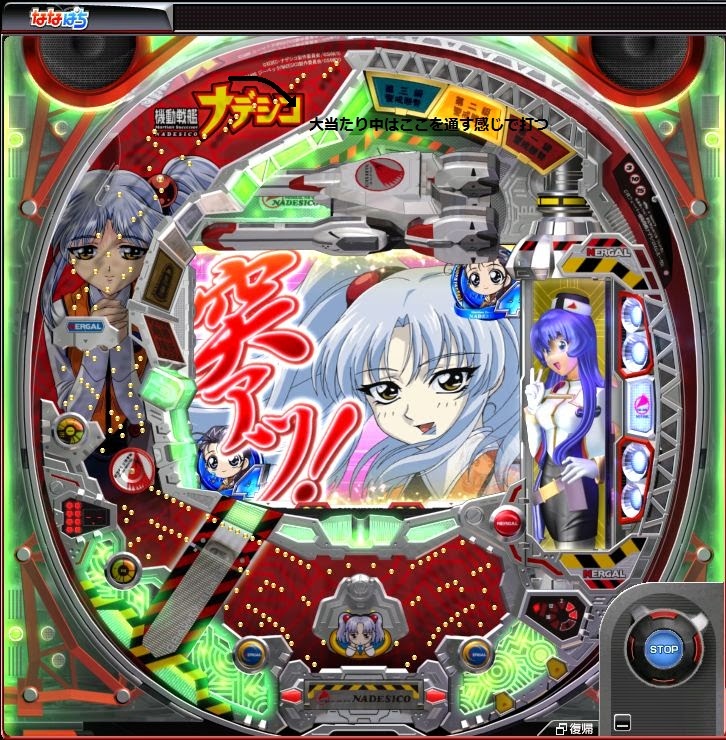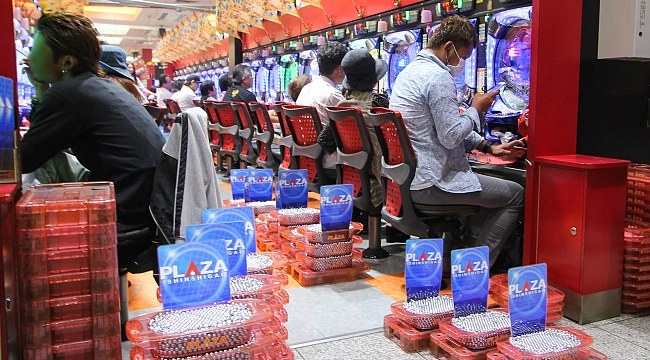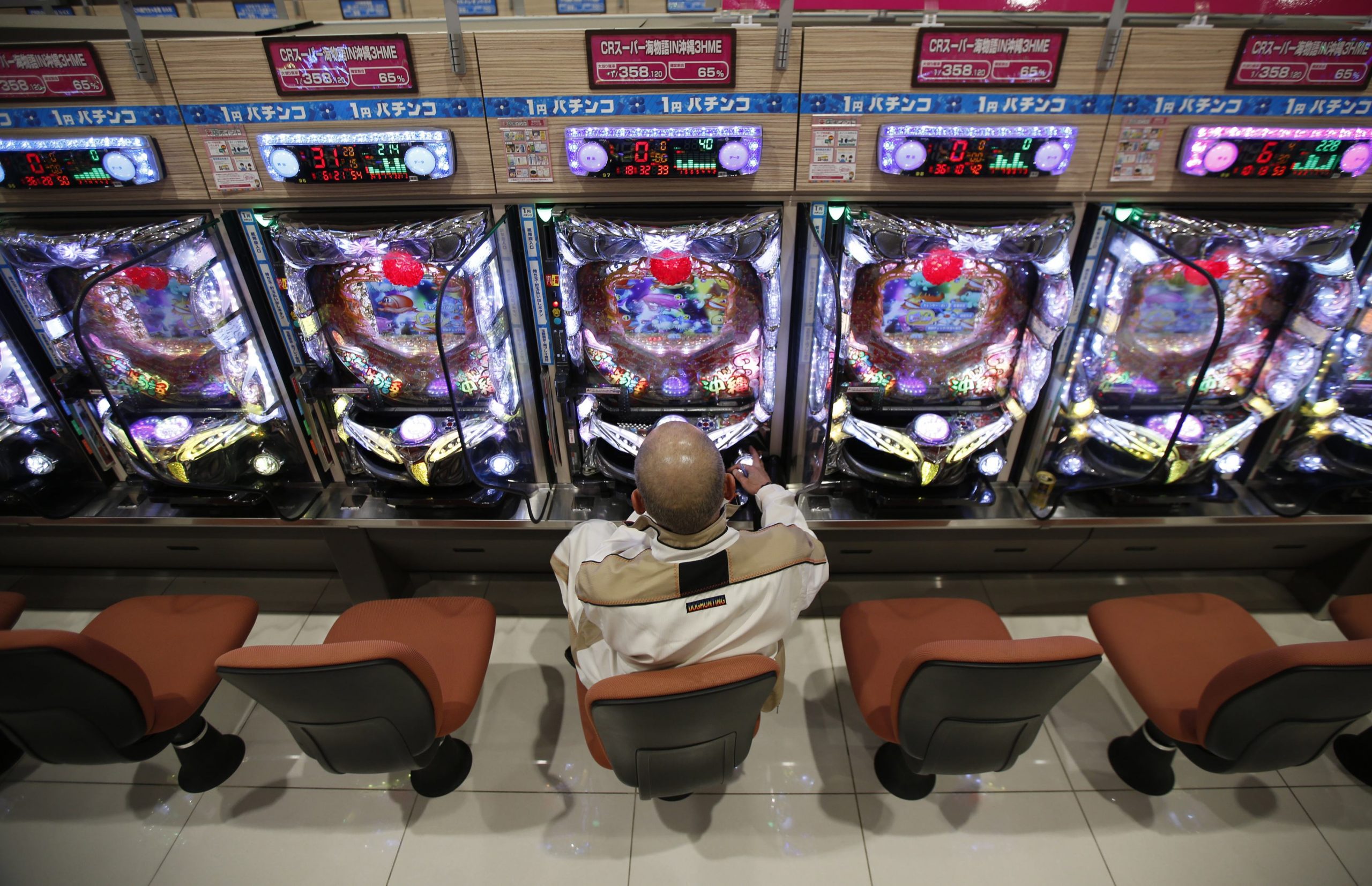They’re everywhere. In every town and city. In shopping districts and beside remote roads. A modern symbol of Japanese culture recognizable around the world. We’re talking, of course, about pachinko parlors.
Pachinko is a type of gambling in Japan. It is a mechanical game. In other words, it is a kind of slot game. There are many types of slot games, but very few of them have been able to gain popularity. Pachinko definition The game of pachinko is played on Japanese machines sometimes called 'Pachinkos'found in thousands of parlors in Japan, similar to the casinos found in the United States. Similar to vertical pinball machines, these gambling games feature many small balls that fall into locations, some of which may earn prizes for players. Patagonia Entertaiment has taken the name of pachinko. While most forms of gambling are illegal in Japan, pachinko is an accepted legal form of gambling. Pachinko consists of the player buying a large number of steel balls and then inserting them.
Still, thanks to their bright lights, deafening noise, smokey air, and links to organized crime and legal loopholes, pachinko hasn’t exactly taken off among visitors to Japan.
It remains extremely widespread in Japan, even as its popularity is starting to wane. And with the recent introduction of indoor smoking bans, there’s never been a better time to give those balls a flick (as it were). Here’s everything you need to know about pachinko in Japan.
What is Pachinko?
Pachinko is a game similar to pinball, played on machines that look similar to slot machines – many machines even incorporate slots into the game.
Fundamentally, pachinko is played by firing ball bearings up the side of the vertical playing area and trying (with luck or skill) to get the ball to land in certain pockets. Get it right, and you’ll win more balls to play with – the balls are both game pieces and prizes. Let the ball fall down the centre and it’s lost, like in pinball.
After playing, you can exchange these balls for prizes and (in a roundabout way) cash.
While pachinko has often been associated with organized crime and yakuza, police crackdowns from the 1960s onwards have gradually reduced this influence. It’s still an extremely popular pastime in Japan, with nearly 9000 pachinko parlours open around Japan as of 2019, and about nine million players in 2017.
The History of Pachinko
Surprisingly, pachinko shares its lineage with cue sports like snooker and pool. In late 18th century France, the game of billiards was adjusted to involve shooting balls up an incline into holes surrounded by fixed pegs. The game of Bagatelle was born. It was popular around the world, and became known as Corinthian bagatelle in America.
In the 1920s, a children’s version called the Corinth Game made the board smaller and replaced the cue with a mechanical paddle. The Corinth Game was first imported to Japan in 1924, and became popular as a gambling game for small prizes. The name “pachinko” came from the onomatopoeic “pachin pachin” of the mechanism.
Is Pachinko Gambling

The first commercial pachinko parlour opened in Nagoya in 1930, but World War II meant that all parlours and pachinko machine factories were closed. Postwar, though, the pastime truly exploded, especially in heavily industrialised Nagoya. A huge surplus of ball bearings helped.
During the war, a large number of Korean prisoners of war and forced labourers were brought to the city to assist with the war effort. Postwar discrimination led many to work in shadier industries like gambling – including pachinko.
Nowadays, about 37% of pachinko parlours are owned by ethnic Koreans, though some estimates put it as high as 80%. Regardless of the exact number, public perception of pachinko as a slightly grubby, second-class, and Korean-dominated industry continues, and was notably a central theme in the book Pachinko by Min Jin Lee.
Classic machines were completely mechanical, with balls bouncing between brass pins to land (or not land) in pockets. In the 1960s, ‘tulip’ catchers started appearing, which put flippers above the pockets to make it more or less likely for a ball to fall in.
Machines were mainly mechanical up until the 1980s, when things started getting a lot more electronic and a lot more flashy. Nowadays, there are usually multiple layers to each game, including slot machines in the centre that lead to increased payout or “fever” modes.
Wait, Isn’t Gambling Illegal in Japan?
Gambling is technically illegal in Japan, outside of a few tightly-regulated exceptions like horse racing and lotteries. Casinos, too, are legal under certain restrictions, but as of May 2020 there are no legal casinos in Japan just yet. Despite this, you can still play pachinko and win money.
This is all thanks to a classic Japanese legal loophole. The law doesn’t cover games played for pleasure, and you’ll notice that cash in pachinko parlours only goes one way: from you to the staff to buy balls.
These balls can be exchanged for all sorts of prizes from bars of soap to bicycles. If you don’t need a new bike, though, you can also exchange them for a “special prize,” – usually an object or small piece of gold in a plastic shell.
You’ll take these special prizes to a different counter, who buys them for cash. These counters are technically separate businesses, even if they’re usually connected to the parlour and may even be in the same building. Still, the point is that you’re never getting money back from the place you paid it in, so it’s not technically gambling.

How to Play Pachinko
If you want to play pachinko properly, you’ll need a venue. Pachinko parlors tend to be loud in every sense of the word, with bright lights, blaring music (indoors) and banners with パチンコ (pachinko) or パチスロ (pachi-suro, pachinko and slot machines) outside.

Once you enter, head to the counter or machine near the entrance to buy some balls. These are usually priced per ball in sets of 250. They’ll come in a big plastic tub for you.
Choose your machine, take a seat, then tip some of your balls into the machine. Some machines have an ‘in’ tray and an ‘out’ tray where you can rest an empty tub, while others come with a single tray.
Now you’re set! Pachinko machines come in all sorts of varieties, many with their own gimmicks, so we can only cover the basics here.
With balls loaded, press the button or spin the wheel in the bottom left corner to fire one (or many) balls up and onto the play area. As we said, the aim is to land balls in the pockets, rather than the gutter at the bottom.
On simple games, pockets will pay out a fixed number of balls. For more complex ones, hitting the right pockets will trigger slot machine spins, which can lead to a payout and/or ‘fever’ mode, with huge bonuses or small wins regardless of where the balls land.
Is Pachinko Gambling Poker
Ready to stop? Take your winnings (hopefully more than you started with!) to the counter, or call an attendant using the button above your machine if it’s available. They’ll count your balls and give you a voucher.

Take this voucher to the prize counter and choose what you want. If it’s cash you’re looking for, exchange your voucher for some special prizes (特殊景品, tokushu keihin). They’re usually small pieces of gold or silver in plastic casing.
You’re not allowed to ask where the cash exchange desk is – remember, it’s supposed to be a completely separate business. It’s almost always very close to the pachinko parlor, though. In Tokyo, this desk is run by the Tokyo Union Circulation, or TUC – look for their name and yellow signage.
Pachinko Etiquette
Pachinko is usually a pretty solitary game – a lot of people (for better or worse) play it as a form of escapism. This means you won’t usually be expected to interact with other players around you, and should be considerate of their personal space.
It’s common to leave something on the machine or seat if you need to leave for a short time. Don’t sit down at a machine that’s got a packet of cigarettes or something similar left on it!
The most important rule, though, is to never touch another player’s balls. Not only is it effectively the same as fiddling with someone’s chips at a casino, it’s considered extremely bad luck, and even insulting to some.
Is Pachinko Gambling Definition
Pachinko might not be the top of many tourists’ bucket lists when coming to Japan, but it’s undeniably an institution in Japanese society. And as its popularity continues to dwindle, who knows how long the parlors will remain. Fancy giving it a go with expert advice? Try this tour!
Header photo by Cory Denton / CC BY 2.0